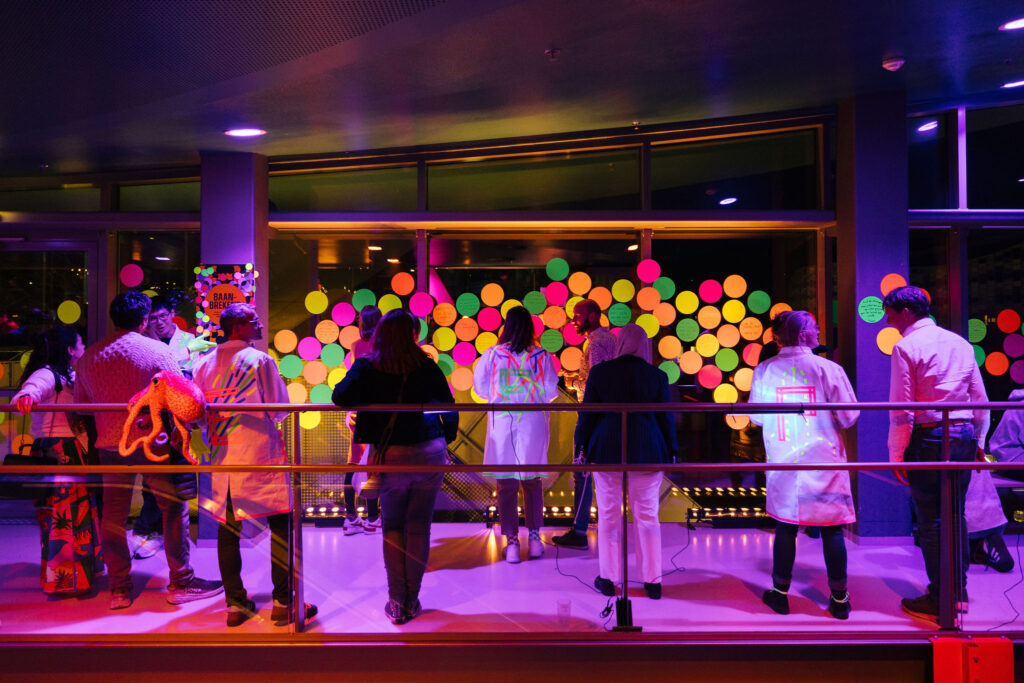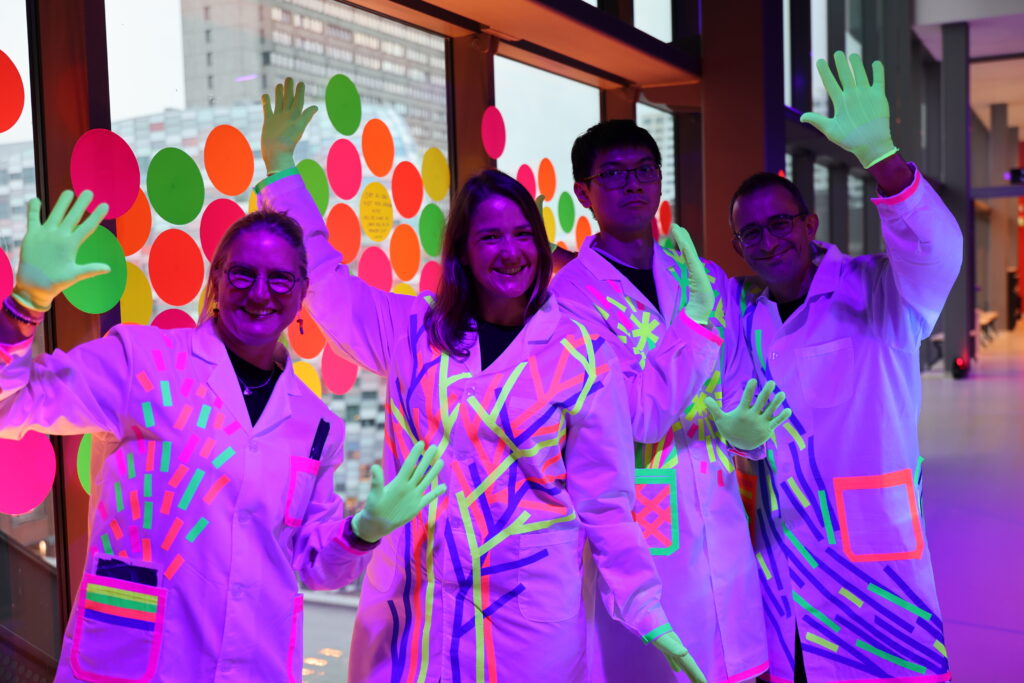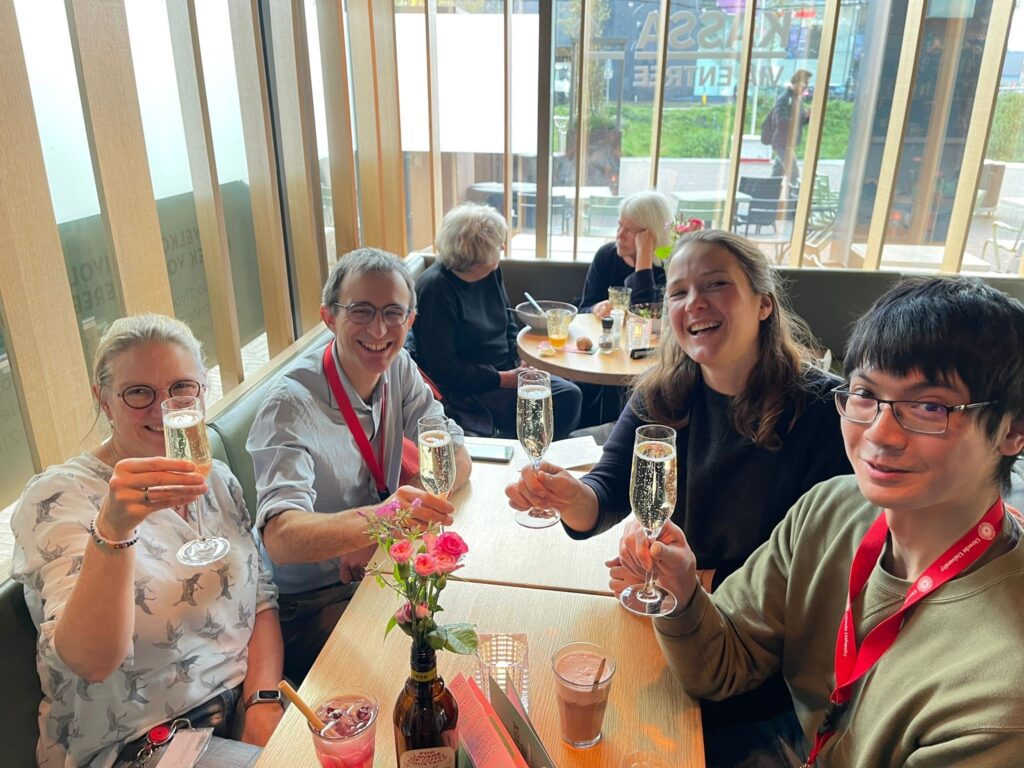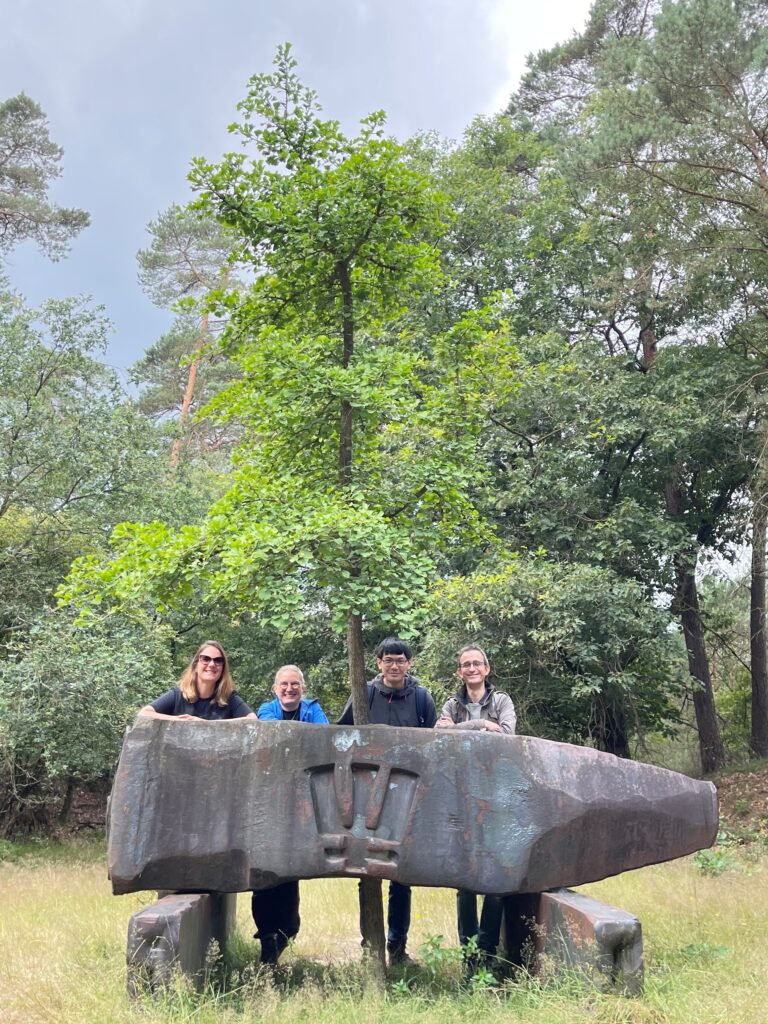Introduction
The Centre for Unusual Collaborations (CUCo) advances knowledge and learnings on processes of inter- and transdisciplinary collaboration by collecting and analyzing team experiences at various funding stages. These insights showcase the value of such research to researchers and policymakers, highlighting challenges and barriers to influence and improve research policies at knowledge institutions. Interviews with CUCo teams demonstrate the impact and importance of interdisciplinary work, aiming to lower barriers and foster collaboration across disciplines.
This time, CUCo spoke with Spark team Rethinking Impact – A transdisciplinary perspective in academia, also known as the PEPE Impact Lab team, about their collaborative process.
Meet the team
Peter Dung, a physicist studying complex, nonlinear systems and fluid dynamics (TU/e)*
Ewelina Schraven, an industrial designer with a life centered approach to design practices and a nature inclusive economy researcher (TU/e, Avans Hogeschool)*
Petra de Graaf a cell biologist delving into the science of lab grown organs, more specifically human penises (UMC Utrecht)
Emanuele Fantini a political scientist exploring the cultural and political significance of rivers through collaborations with journalists and artists (UU / IHE Delft)
* They are no longer affiliated with EWUU institutes, which has resulted in the project not continuing with a follow-up research proposal for an Unusual Collaborations (UCo) grant.
Written by: Helma van Luttikhuizen

First things first: could you tell us who you are as a team, what excites you about working together and what you work on?
Petra: We started with actually two questions that shaped what we do in the Impact Lab. On one side we asked: how do you really measure impact in science? There is so much focus on things like your h-index or publishing papers, but what about podcasts, books, or public outreach? Emanuele, for example, had all this amazing dissemination work, but it was not valued the same way. So we wondered—when do we actually shift from these traditional metrics to truly engaging with the public? On the other side, we looked at how we engage with nature in our research. What is the impact we are having—not just the good stuff, but also the bad, like plastic waste or other environmental consequences? These two sides—rethinking impact in science and connecting with nature—came together to define what the Impact Lab is about.
Peter: For me, impact in science has always been a bit of a tension. On the one hand, impact can mean something like understanding how a black hole forms—pure knowledge, which is fascinating but often feels very detached from society. On the other hand, there is societal impact, where research directly connects to people’s lives. That tension between pure knowledge and societal relevance is something that really caught my interest, especially given my background.
Petra: I work on tissue engineering for urethral diseases, and I always focus on the impact it has on these specific patients. But at the same time, I question if my expensive research is truly the best use of resources—could it be limiting the ability to help others in healthcare? That is often how I think about impact.
Ewelina: I find the term impact is often misunderstood because it’s frequently defined in very narrow ways—especially in research. My own work focuses on systems, ecosystems, and relationships, so I naturally approach things from a broad perspective. As a university lecturer, designer and a researcher I observe that people often make confident claims about their work’s impact. Yet when we dig deeper, we discover the measurement may be limited to only a small slice of the bigger picture. Although that approach isn’t necessarily all wrong, it can be problematic when major decisions and sweeping claims rely on such a narrow viewpoint.
In our project, we wanted to explore different ways of understanding impact—to see it as more than just another buzzword and to consider it from multiple angles, while also recognizing that impact isn’t the only factor that matters. We asked ourselves, “How can we have a better conversation about impact within and beyond the world of science?” Initially, we considered creating a matrix or tool to measure scientific impact, but we soon realized that might just lead back to the same narrow approach we aimed to avoid. Instead, we focused on experience, participation, and active engagement in the world. Rather than starting with a fixed method, we let our approach emerge naturally from what we were doing. It’s not a one-size-fits-all solution—and we don’t claim it is—but it offers a foundation we can hold onto and keep building from.

How has this collaboration shaped your perspective on your own disciplinary background. What did others allow you to see that you didn’t see before?
Peter: As I also mentioned during our session at the international Global Alliance for Inter-and Transdisciplinary conference, it is about incorporating playfulness into the process. In my own background, especially in physics, the process has always been quite standard—trying to understand nature through mathematical formulas and modeling problems. But now, I am exploring how playfulness can be incorporated by using creative dialogues and storytelling. This is something new to me, and I appreciate the opportunity to experience it and see how it can foster innovation. It is interesting because, in my field, we often build on what we have learned in the past, but here, we are really trying to understand how the process itself can lead to new, innovative ideas. So, I am thinking about how we can structure discussions to encourage creativity and innovation, and how that process can help us to come up with better theories or models.
Want to know more about the impact of playfulness? Listen to the podcast Peter Dung on Bubbles!
Petra: When I started the project, I really thought I would learn a lot from Emanuele and Ewelina since they have more experience with transdisciplinary and cross-disciplinary work. But as things progressed, I realized I actually had something to contribute too, I grew in the process. It made me see how interconnected nature, humans, and health are—we all share the same basic building blocks. I work in a lab, and it was interesting when you, Emanuele, asked, “What is a lab?” By then I realized a lab can translate into so many different contexts, which is really nice. So, even as a cell biologist—where you might not think interdisciplinary or transdisciplinary work is your thing—there is so much to bring to the table in these groups. I have been able to take that perspective back to everyone in the lab too, and that is really nice.
Want to know how Petra rethinks impact in the lab? Listen to the podcast Petra de Graaf on Curiosity!
Emanuele: I am a bit surprised from where you started, because the way I have come to learn about you is as a very artistic person—someone really engaged in and even making art. Maybe you are not really combining those sides of yourself yet?
Petra: Exactly, that is what I am trying to say. I was not like a ‘headless chicken’—I was really a ‘chicken less head’, I was only using my head for work, never the rest of me. That is actually one of the biggest things I have learned: how to work as a whole person. For example, with the Theory U approach to listening, I realized you need to tap into the more interesting, deeper parts of your body to truly listen—not just downloading information in your brain, but engaging with your whole self.
Emanuele: When the project started, one of the reasons I wanted to explore how we can rethink or understand impact differently, was because I was not really satisfied with how the parts of my work that I consider important were being assessed by the system. For example, things like podcasts do not fit into the usual metrics, like publications in peer-reviewed journals. What I realized, at least in my perception, is that this kind of approach seems more common in colleagues from what we call the “hard sciences,” like the so-called STEM (science, technology, engineering and mathematics) disciplines. They are more used to quantitative research, so it is easier for them to connect with metrics than with something like the scientific value of a podcast. But then I was surprised, for example, by how interested Peter or Petra were in things that were less familiar to them, like storytelling or podcasting. I took a step back and realized I had my own biases or stereotypes regarding engineers would not be interested or would not see it as rigorous enough. That experience pushed me to rethink not only my perceptions but also how I view my own work.
Want to know more about what made Emanuele rethinking impact on relations in education and research? Listen to the podcast Emanuele Fantini on a Horse!
Ewelina: One example really stuck with me. As a nature-inclusive economy researcher, I’ve been looking into how to create transformative social movements that embrace a paradigm shift in how we understand values and interdependencies. During a conversation with Peter about the physics of resonance I had an insight. He explained how pendulums need precisely the right nudge at just the right time to keep moving—push too lightly and they slow down, push too hard and they become chaotic. It helped me see how to guide a group or deliver a message effectively, in a stable and harmonious way. It really comes down to the right timing and a small, well-placed nudge.
This also relates to what I call the “voice of nature.” In a more mainstream, Western economy-focused setting, people might say, “Wait, you talk to trees?” But knowing when and how to introduce these ideas is crucial. It’s not rocket science, but it is a kind of “science” in that it helps me match my message to people’s starting point—then gently move it toward a more mainstream perspective. Using fundamental physics concepts to build a movement around ideas that might not yet be widely accepted was a real lightbulb moment for me.

What key insights from this collaborative process will you carry forward into your (future) work?
Ewelina: Friends for life!
Petra: Yes, friends for life and what I have really learned is how to talk to different disciplines and make my work more understandable. In STEM, storytelling is not something we typically do, but it is so important—like for grants. You cannot just say, ‘I am important, my work is important, here are my papers, give me the money’. That does not work. You have to show the audience why it matters, and storytelling is a big part of that. It was not a skill I had before, but now I do, and that has been really valuable. On a less practical note, what I have loved most is keeping my curiosity and playfulness alive. That is why I got into science in the first place—to understand the molecules of life. That was my goal, and learning to keep that excitement alive has been so rewarding.
Ewelina: Building on that, for me, the biggest takeaway has been daring to show up as I am and really owning it. It is about being able to say, “This is an important way of doing things.” Maybe it is not the only way, and maybe it is very different, but it is still valuable—and actually welcome and needed. I have also realized that some of the things I naturally bring, I did not always value enough. What I’ve learned is to embrace what I already have and show up fully in my work, even if others do things differently. And I have discovered that you often find your crowd in unexpected places. Just talking to people, connecting, and staying with those who resonate can spark so many ideas. Another important lesson I take is to connect on a personal level first, and then think about the projects. That connection creates this energy and joy that makes everything flow. It is so powerful, and it makes the work not just meaningful but truly enjoyable.
Want to know more about the impact of an unusual journey? Listen to the podcast Ewelina Schraven on Everything!
Petra: I think ‘spark’ is such a perfect word for this. During the speed dating at the end of the Spark training there was one project where I thought, yes I can add to this based on my expertise, but it did not spark anything for me. And I realized, I do not want to do things that don not spark joy—I want to do things that are fun. Science is exhausting. There is so much rejection, and you need to keep your mojo, your sense of fun, to survive. You have to find that balance and remember why you are here in the first place. I remember at a CUCo meeting, I pitched this idea: why are you in science? Because you want to understand nature, because you are curious, right? And everyone in the room was nodding along. But then I asked, who is here for the h-index? and the mood dropped instantly. Afterwards, people came up to me, defending why the system matters, why we need metrics like the h-index. And I just thought, why are you defending a system that does not spark joy? Sure, it works, but it doesn’t make you happy. So why not focus on making ourselves happier in science?
Peter: For my future work, especially if I collaborate with designers or artists, I have learned a couple of important things. First, you really have to embrace uncertainty. Working on these kinds of projects can sometimes lead to a complete change in direction. And while that can happen in research too, the level of uncertainty in art and design is often even greater. The second thing I have learned, also from Petra, is that this work should be fun. Making science and research enjoyable is so important—not just for keeping people happy while doing it, but also because it sparks creativity. When you’re having fun, the ideas flow, and the work gets better.
Emanuele: Looking back at this process, I would describe it as a journey of serendipity. We all started with an idea, but it evolved along the way, and I think that was possible because there was room to explore and even fail without pressure. If I were to start a new project in the future, I would aim to keep that spirit alive—allowing for some freedom and flexibility. Most projects have clear deliverables and structured paths, like tracks for a train, guiding you in one direction. But I have learned that having space to switch tracks and explore things that might not necessarily result in a linear output can be incredibly valuable. The whole journey itself was a discovery, and I would like to bring that into future projects.
Ewelina: What really stood out for me was that, although our process was structured, the deliverables weren’t predefined. We spent a lot of time uncovering why we were doing what we were doing and clarifying our mission. It took a while, but once that vision was clear, everything fell into a place.
Connecting with nature was a big part of it—using methods like dance and fun, pressure-releasing activities, which felt very different from the usual scientific approach. Instead of starting with literature reviews, we worked intuitively, weaving together all the complexities and sensing how different stories connected. Even though our backgrounds varied, we were able to tap into a shared human perspective, and that made our work genuinely meaningful.
Stepping out of the office or lab into a setting that was unfamiliar to everyone really put us on an equal footing. The session we held outdoors, in the park, noticeably shifted the quality of our insights. One lesson I’ll definitely carry forward is: if there’s no energy, we’re going in the wrong direction. Recognizing that energy flow—even if it’s hard to define—was crucial. Whenever we felt energized and the work flowed, we knew we were on track; when the energy dipped, it signaled a need to pivot. This was the first time I’ve worked this way, and I’m excited to bring this approach to future projects.

Is there anything else you would like to point out?
Peter: To compare this process, it is clear that we tried a lot of things, shared experiences, and explored new methods, but for some people, especially in traditional academic circles, it might seem like a waste of time. There is no immediate paper or tangible output to show for it. I sometimes ask myself if this approach is the right way to go, especially when you think about practical concerns like finding a job or career position. These methods may not yield immediate, measurable results, which can feel risky. But I think this is part of a long-term belief for me—trying things out to see where they lead, even if the outcome is uncertain right now. At this stage in my career, I still have room to explore, and I can afford to take these risks. For early-career researchers, I think they might face similar dilemmas as they balance exploration with the pressure to produce tangible results. Sharing this experience might help others understand that sometimes, the long-term impact of these unconventional approaches is more valuable than short-term outcomes.
Ewelina: I would like to point out our gratitude to the CUCo team. All the learning and this wonderful energy that everybody brings in and creates that space for us to be able to explore and normalizes this way of being. That is so powerful. And for me, it means a lot. And I know for the team as well. So thank you, CUCo!